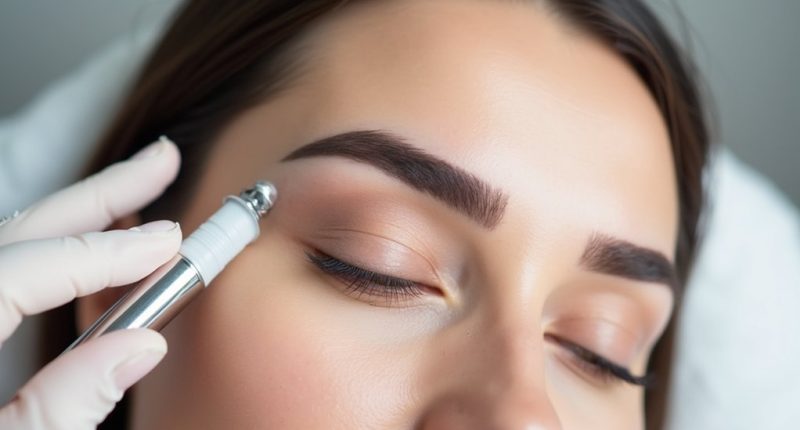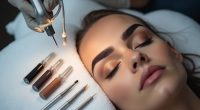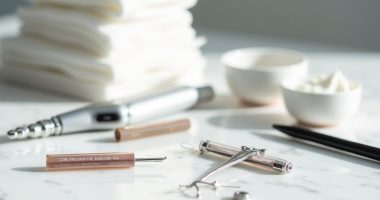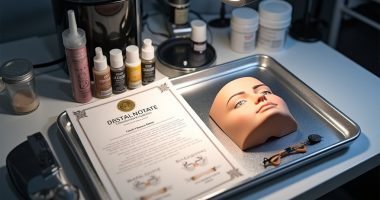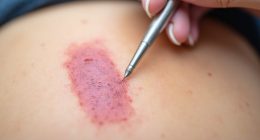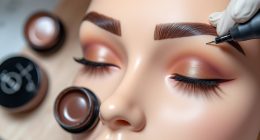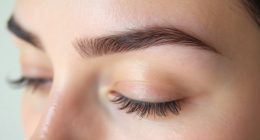Permanent makeup removal isn't a quick fix. Options include laser, saline, chemical treatments, and microneedling—each with their own timeline. Laser needs 3-10 sessions spaced months apart; saline typically requires 2-5 treatments. Results depend on pigment color, depth, skin type, and age of the tattoo. Black and blue pigments? Lucky you. Reds and oranges? Not so much. Expect temporary redness and swelling. The full process takes patience, multiple appointments, and proper aftercare.
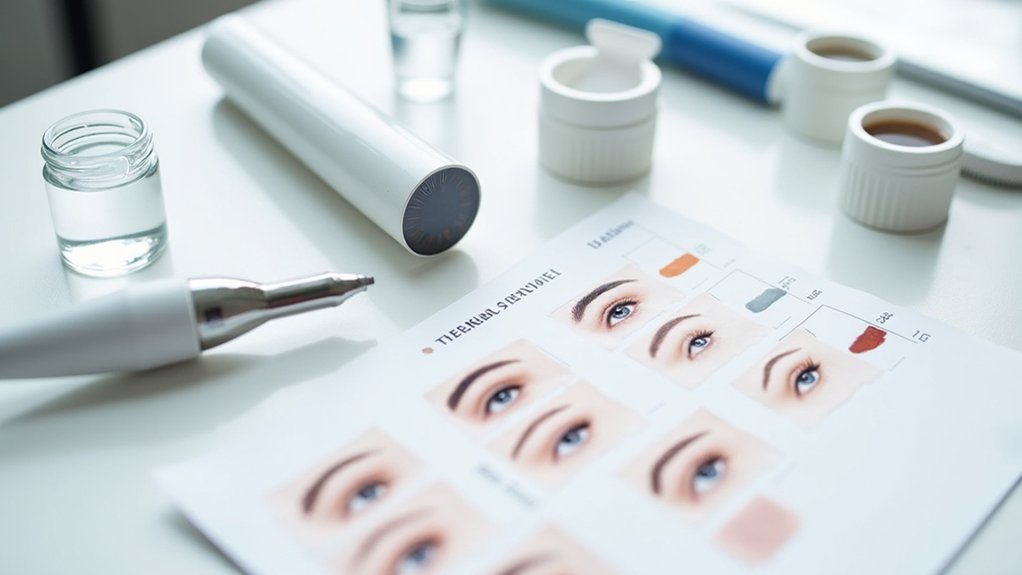
Countless individuals who once embraced permanent makeup are now seeking ways to remove it. Maybe it's outdated eyebrows, a botched eyeliner job, or simply changing preferences. Whatever the reason, there are multiple options available. Each technique comes with its own timeline and effectiveness.
Laser removal utilizes Q-switched technology to shatter pigment particles, making them easier for the body to flush away. Not quick, though. Patients typically need 3-10 sessions spaced 6-8 weeks apart. Laser technology is particularly effective for breaking down cosmetic tattoo pigments while minimizing damage to surrounding tissue.
Patience required: 3-10 laser sessions break pigment down over months, not days. Your body needs time to flush it away.
Saline removal works differently. It uses salt solution to draw pigment out through osmosis. Fewer sessions usually—just 2-5 on average—but with longer gaps of 8-12 weeks between treatments. Technique comparison shows saline is often gentler on skin. Treatment timelines vary greatly between methods. Saline removal is also not recommended for eyeliner tattoos due to safety concerns.
Chemical removal employs glycolic acid or similar solutions to fade unwanted pigment. Results? Less predictable than laser methods. More sessions required, too.
Microneedling offers another approach, manually removing ink with fine needles. Works well for eyebrows. Often combined with saline or chemicals for better results. Not as harsh on skin as some alternatives. A professional consultation is essential to discuss your desired outcomes and determine the best removal technique.
Success rates depend on several factors. Pigment color matters—some colors are stubborn. Black and blue respond well to laser; reds and oranges, not so much. Depth plays a role too. Deeper pigments require more sessions. Your skin type and tone? Essential considerations. Darker skin faces higher risk of hyperpigmentation with certain methods. Older tattoos actually remove more easily than fresh ones. Go figure.
Side effects happen. Temporary redness and swelling are common. Scabbing occurs frequently. More serious concerns include scarring and permanent skin color changes. Infection is possible if you don't follow aftercare instructions. And here's the kicker—complete removal isn't always achievable.
Post-treatment care is vital. Stay out of the sun. Apply recommended ointments religiously. Don't pick at scabs—seriously, just don't. Attend all follow-up appointments. Results take time; patience is mandatory. Full fading may require months.
The perfect removal method doesn't exist. Each person's situation demands individual assessment. Multiple factors determine the best approach. One thing's certain—removing permanent makeup takes longer than applying it. Ironic, isn't it?
Frequently Asked Questions
How Painful Is Permanent Makeup Removal?
Permanent makeup removal hurts. That's the truth. Similar to getting a tattoo—rubber band snapping against skin kind of feeling.
Pain varies though. Bony areas? Worse. Everyone's different.
Pain management options exist. Numbing creams, lidocaine injections, cooling devices. Thank goodness.
Post-treatment feels like sunburn. Redness, swelling, itching.
Recovery tips: follow aftercare instructions religiously. Most discomfort gone in 1-2 weeks. Not fun, but definitely survivable.
Will I Need Multiple Sessions for Complete Removal?
Yes, multiple sessions are practically guaranteed. Nobody gets away with just one.
Session duration ranges from 15-45 minutes, but the real commitment? Time between treatments. Most people need 3-8 sessions total, depending on how stubborn that pigment is.
Your immune system, skin type, and the tattoo's age all play roles. Expected results improve gradually—some fading after 1-3 sessions for light work, but those machine brows? Minimum three visits.
No shortcuts here.
Is There Scarring After Permanent Makeup Removal?
Scarring is possible after permanent makeup removal, but it's typically minimal.
Key scarring factors include technician skill, removal method, and the client's skin type. Some people heal perfectly. Others don't. Shocking, right?
The healing process plays an essential role in preventing scars. Blisters, redness, and swelling—all normal.
But picking at scabs? Terrible idea. Sun exposure makes everything worse.
Bottom line: proper aftercare dramatically reduces scarring risks. Nothing's guaranteed though. Bodies are weird like that.
Can All Colors of Permanent Makeup Be Removed Equally Well?
No, not all pigment colors fade equally.
Dark colors like black and brown? Easier to remove.
Light colors—think whites, yellows, reds—those stubborn little devils put up more of a fight.
Removal techniques matter too. Lasers work great on some colors, terrible on others.
Saline removal treats all colors more equally.
Titanium dioxide, often in lighter pigments, can actually darken during laser treatments. Weird, right?
Complete removal isn't guaranteed for any color. Just facts.
Are There Any Medications I Should Avoid Before Removal?
Several medications should be avoided before permanent makeup removal.
Blood thinners are the big one. Aspirin? Stop 7-14 days prior. NSAIDs and fish oil? Same deal. They increase bleeding risk. No joke.
Prescription anticoagulants require doctor consultation first. Obviously.
Products that increase skin sensitivity need attention too.
Retinoids should be stopped weeks before. AHAs? Those too.
Accutane users face the longest wait – 6-12 months. Yeah, really that long.
